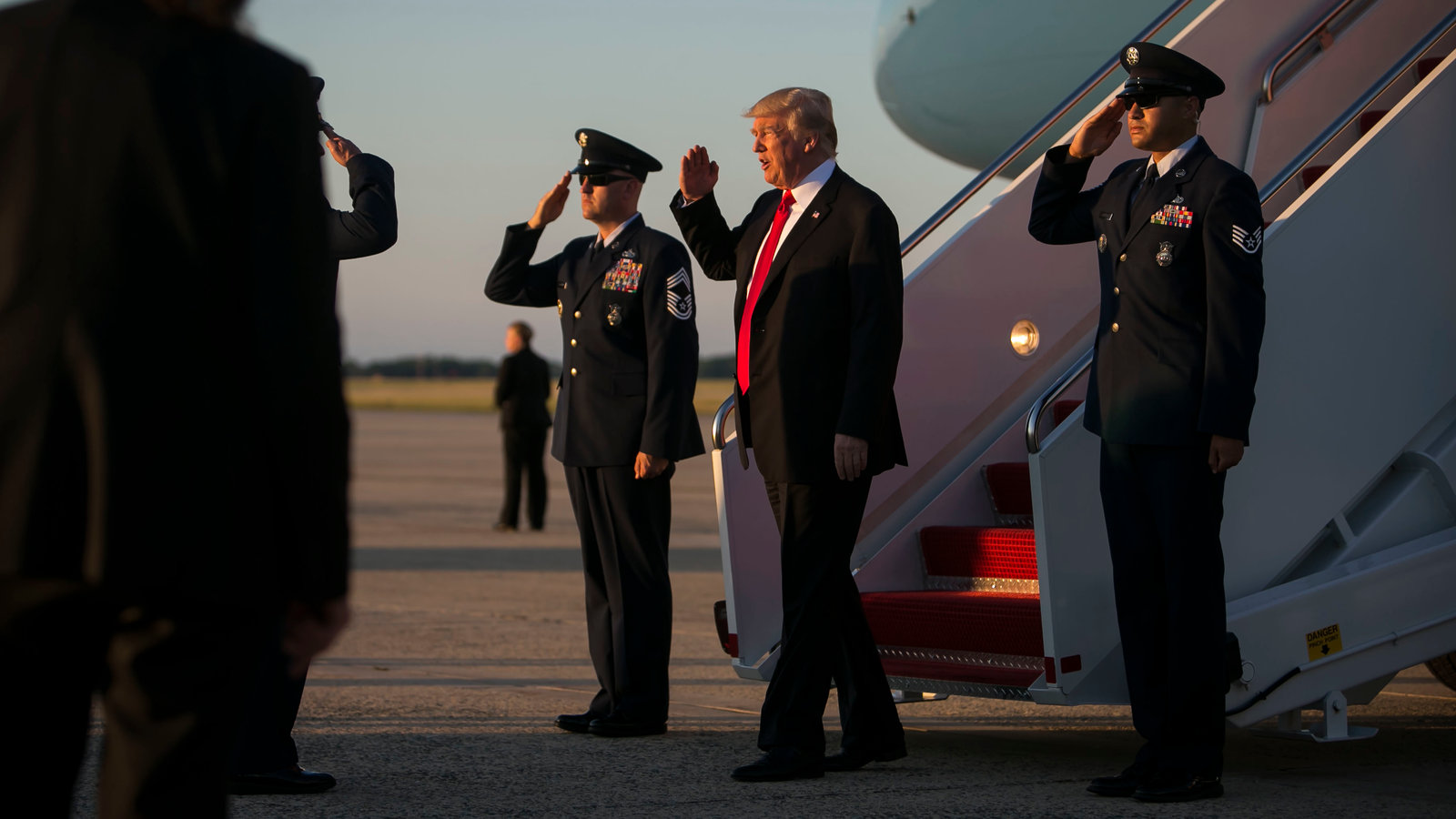Trump's Transgender Military Ban: A Clear Look At The Issues

Table of Contents
The Trump administration's controversial transgender military ban ignited a firestorm of debate, sparking legal battles and raising critical questions about inclusivity, equality, and military readiness. This article aims to provide a balanced and informative overview of the key issues surrounding Trump's Transgender Military Ban, exploring its genesis, legal challenges, impact on transgender service members, and broader implications for LGBTQ+ rights within the military. Understanding Trump's Transgender Military Ban is crucial for comprehending the ongoing struggle for equality and inclusion within the armed forces.
<h2>The Policy's Genesis and Implementation</h2>
President Trump's announcement of the transgender military ban, delivered via a series of tweets and subsequent memoranda in July 2017, shocked many. The policy effectively barred transgender individuals from serving openly in the U.S. military, reversing Obama-era policies that had allowed transgender individuals to serve openly. The Trump administration justified the ban primarily on grounds of cost, citing concerns about the expense of medical transition-related care and potential disruptions to military readiness. However, critics argued that these justifications were flimsy and masked underlying discriminatory motives.
The implementation of the ban was far from seamless, facing immediate and substantial legal challenges. The timeline involved numerous court battles, temporary injunctions, and shifting policy directives.
- Date of initial announcement: July 26, 2017 (via Twitter)
- Key arguments used to justify the ban: High cost of medical care, concerns about unit cohesion and readiness, perceived lack of combat effectiveness.
- Initial reaction from the public and advocacy groups: Widespread condemnation from LGBTQ+ rights organizations, human rights groups, and many Democrats. Supporters of the ban largely cited concerns about military readiness and traditional values.
<h2>Legal Challenges and Court Battles</h2>
The Trump administration's transgender military ban faced a relentless barrage of legal challenges from various organizations and individuals. These lawsuits argued that the ban violated the constitutional rights of transgender service members, specifically their rights to equal protection under the law and freedom from discrimination.
The legal arguments centered on whether the ban was justified by a compelling governmental interest and whether it was narrowly tailored to achieve that interest. The administration argued that the ban was necessary to maintain military readiness and operational effectiveness, while plaintiffs countered that the ban was discriminatory and lacked a rational basis.
- Names of major organizations involved in the lawsuits: The American Civil Liberties Union (ACLU), Lambda Legal, GLAD (Gay & Lesbian Advocates & Defenders).
- Summary of key court decisions: Lower courts issued conflicting rulings, with some upholding temporary injunctions blocking the ban's enforcement and others allowing it to proceed.
- Impact of court rulings on the lives of transgender service members: The legal uncertainty created immense stress and anxiety for transgender service members, many of whom faced discharge and the loss of healthcare benefits.
<h2>The Impact on Transgender Service Members</h2>
Trump's Transgender Military Ban had devastating consequences for transgender individuals serving in the military. Many were forced out of service, losing their careers, healthcare benefits, and the camaraderie of their units. This forced separation resulted in significant mental health challenges, including increased rates of depression, anxiety, and suicidal ideation.
Access to healthcare, crucial for many transgender individuals, was severely hampered, and those already in transition were left in legal limbo. The ban also caused significant damage to the morale and readiness of the military as a whole, as many service members expressed concern about the discriminatory nature of the policy.
- Statistics on transgender service members affected: Precise numbers are difficult to obtain, but thousands of transgender service members were directly affected.
- Specific examples of the challenges faced: Loss of housing, healthcare, and job security; difficulty in accessing mental health services; social isolation and stigma.
- Long-term effects on mental and physical well-being: Studies have shown a significant increase in mental health issues among transgender service members affected by the ban.
<h2>The Broader Context: LGBTQ+ Rights and Military Service</h2>
Trump's Transgender Military Ban cannot be viewed in isolation. It is deeply intertwined with the broader struggle for LGBTQ+ rights and inclusion within the military. The ban represents a setback from the progress made following the repeal of "Don't Ask, Don't Tell" in 2010, which had previously prohibited openly gay and lesbian individuals from serving.
The policy's impact extended beyond transgender individuals, affecting recruitment and retention efforts for the entire military. Many potential recruits, both LGBTQ+ and straight, were deterred by the perceived lack of inclusivity and equality within the armed forces.
- "Don't Ask, Don't Tell" policy and its repeal: A reminder of the historical context of LGBTQ+ exclusion from military service.
- Current policies on LGBTQ+ inclusion in the military (post-ban): The Biden administration has reversed the ban, reaffirming commitment to inclusivity.
- The impact on military readiness and morale: The ban negatively affected both, eroding trust and hindering recruitment efforts.
<h2>Conclusion: Understanding the Legacy of Trump's Transgender Military Ban</h2>
Trump's Transgender Military Ban represents a significant chapter in the ongoing fight for LGBTQ+ rights and equality. The policy's implementation sparked numerous legal challenges, had detrimental effects on the mental and physical well-being of transgender service members, and sent a chilling message about inclusivity within the military. Understanding the ramifications of this ban is crucial for preventing similar discriminatory actions in the future and promoting a more inclusive military.
The legacy of Trump's Transgender Military Ban highlights the need for continued advocacy and vigilance in the pursuit of transgender rights and full inclusion in all aspects of society, including military service. We must remain committed to ensuring that all individuals, regardless of their gender identity, have the opportunity to serve their country with honor and dignity. For further research and engagement, explore resources from organizations like the ACLU, Lambda Legal, and the Human Rights Campaign. Let’s continue the conversation on transgender military policy and work towards a more inclusive and equitable future for transgender inclusion in the military.

Featured Posts
-
 Post Liberation Day Financial Repercussions Of Trumps Trade Policies
May 10, 2025
Post Liberation Day Financial Repercussions Of Trumps Trade Policies
May 10, 2025 -
 The Impact Of Caravan Sites On A Uk City A Community Divided
May 10, 2025
The Impact Of Caravan Sites On A Uk City A Community Divided
May 10, 2025 -
 Disneys Profit Outlook Improves Parks And Streaming Drive Growth
May 10, 2025
Disneys Profit Outlook Improves Parks And Streaming Drive Growth
May 10, 2025 -
 Transgender Women And Pregnancy A Community Activists Proposal On Uterine Transplants
May 10, 2025
Transgender Women And Pregnancy A Community Activists Proposal On Uterine Transplants
May 10, 2025 -
 Nyt Spelling Bee April 1 2025 Hints Answers And Pangram
May 10, 2025
Nyt Spelling Bee April 1 2025 Hints Answers And Pangram
May 10, 2025
